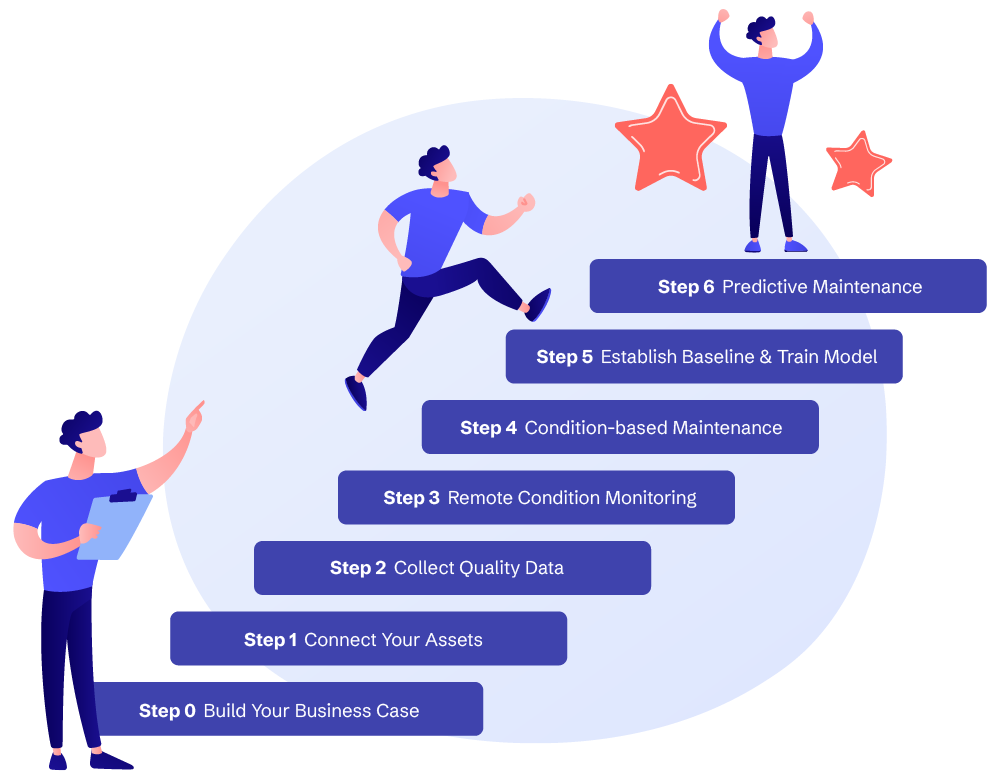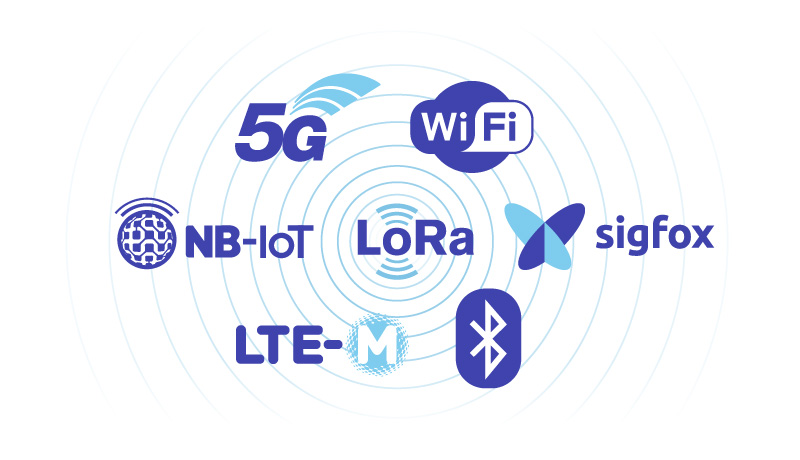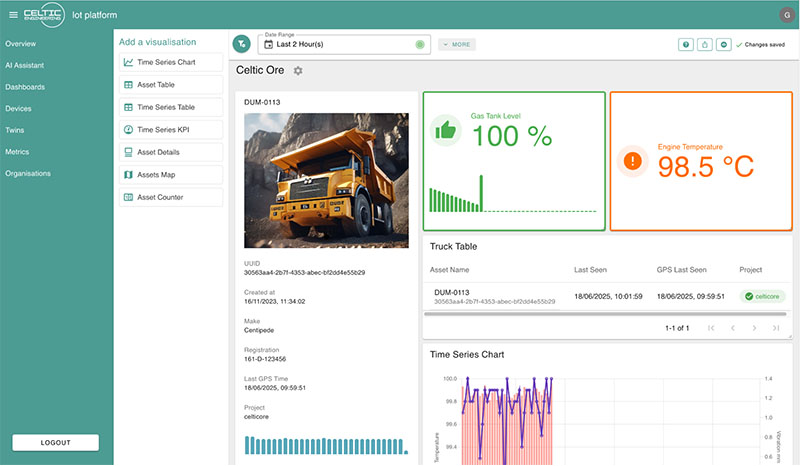Condition monitoring is a proactive maintenance strategy that uses IoT (opens new window) sensors and real-time data analysis to continuously track the health and performance of industrial equipment. By monitoring key parameters like vibration, temperature, and pressure, organisations can detect potential issues before costly failures occur, optimise maintenance schedules, and maximise equipment uptime.
This data-driven approach enables maintenance teams to identify developing problems early and take corrective action, moving beyond traditional reactive maintenance that waits for equipment to fail or time-based schedules that ignore actual equipment condition. As organisations increasingly seek to reduce costs, improve safety, and extend asset lifecycles, IoT-enabled condition monitoring has become essential for intelligent maintenance decisions.
Predictive Maintenance vs Condition Monitoring
While condition monitoring, condition-based maintenance, and predictive maintenance are often used interchangeably, they represent distinct stages in modern maintenance strategies. Condition monitoring (CM) is the foundational data collection process, using IoT sensors to continuously gather real-time equipment health data like vibration and temperature. Condition-based maintenance (CBM) uses this monitoring data to trigger maintenance actions when parameters exceed thresholds, moving beyond fixed schedules to actual equipment condition.
Predictive maintenance (PdM) (opens new window) represents the most advanced stage, employing machine learning and historical analysis to forecast when failures will occur. Organizations typically progress sequentially: starting with CM for data visibility, implementing CBM for condition-based decisions, and advancing to PdM for failure forecasting and maintenance optimization.

Benefits of Condition Monitoring
The implementation of condition monitoring systems delivers significant advantages across multiple aspects of industrial operations, making it an essential component of modern maintenance strategies.
Operational Efficiency and Asset Visibility
Condition monitoring provides real-time visibility into asset performance across entire operations, enabling maintenance teams to make informed decisions about resource allocation and priorities. This enhanced visibility reduces unplanned downtime, minimises production disruptions, and helps optimise overall equipment effectiveness. Continuous monitoring identifies performance degradation trends before they impact production, achieving higher throughput and better product quality.
Enhanced Maintenance Planning
Traditional maintenance relies on fixed schedules or reactive responses, leading to excessive costs or unexpected breakdowns. Condition monitoring transforms planning by providing data-driven insights for strategic scheduling decisions. Maintenance teams can prioritise work orders based on actual equipment condition rather than arbitrary intervals, optimising resource utilisation and reducing spare parts inventory requirements.
Remote Monitoring and Global Asset Management
IoT-enabled condition monitoring allows organisations to assess equipment health regardless of geographic location, particularly valuable for remote sites like mines or offshore platforms. This capability enables OEMs to provide comprehensive aftermarket services (opens new window) to field equipment, maintaining visibility and control without requiring physical presence at every location.
Aftermarket Service Opportunities
For equipment manufacturers, condition monitoring opens significant aftermarket revenue opportunities, with research showing lifetime value can match original product sales price. IoT-enabled services provide manufacturers with new revenue streams while taking ownership of customer relationships. Condition-based maintenance becomes a value-added service that differentiates OEM offerings from third-party vendors.
Product Improvement Through Data Feedback
Condition monitoring creates feedback loops between field performance and product development. Real-world performance data helps manufacturers identify failure modes, component wear patterns, and operational conditions affecting reliability. This feedback enables improved future designs, better operating practices, and more effective maintenance procedures.
Foundation for Predictive Maintenance
Comprehensive condition monitoring creates the data foundation for advanced predictive maintenance (opens new window) strategies. As organisations accumulate historical data and develop analytical capabilities, they can transition from reactive alerts to proactive failure prediction models, enabling optimised maintenance scheduling and spare parts inventory management.
Join our Mailing List
Join thousands of professionals and get IoT tips to help you transform your business.
Condition Monitoring Technologies
Modern condition monitoring systems rely on several key technologies working together to provide comprehensive equipment health insights.
Sensors
The sensor layer forms the foundation of any condition monitoring system, converting physical equipment parameters into measurable electrical signals that can be processed and analysed.
Vibration sensors represent by far the most common type of sensors used in condition monitoring applications. These devices are particularly effective for monitoring rotating equipment such as motors, pumps, compressors, and turbines. Vibration analysis can detect a wide range of mechanical issues including bearing wear, misalignment, imbalance, looseness, and gear problems. The frequency spectrum analysis of vibration data provides specific diagnostic information that enables maintenance teams to identify not just that a problem exists, but what type of problem is developing.
However, effective condition monitoring often requires multiple sensor types depending on the specific equipment and application requirements. Temperature sensors monitor thermal conditions that can indicate electrical problems, lubrication issues, or excessive friction. Pressure sensors track hydraulic and pneumatic system performance, while gas sensors can detect leakage or contamination issues. Humidity sensors help monitor environmental conditions that affect equipment reliability, and current sensors can identify electrical system anomalies.
The selection and placement of sensors requires careful consideration of the equipment type, operating environment, and specific failure modes that need to be detected. Modern sensor technologies offer improved accuracy, extended operating ranges, and enhanced durability to withstand harsh industrial environments.
Wireless Connectivity
Wireless connectivity has revolutionised condition monitoring implementation by eliminating the need for extensive wiring installations and enabling monitoring of previously inaccessible equipment locations. Modern wireless technologies provide reliable, secure communication links that can transmit sensor data over significant distances while maintaining low power consumption for extended battery life.
Various wireless protocols are available depending on specific application requirements, including Wi-Fi for high-bandwidth applications, cellular connectivity for remote locations, and low-power wide-area networks (LPWAN) for battery-powered sensors that need to operate for years without maintenance.
 Common wireless technologies
Common wireless technologies
IoT Platform Integration
Industrial Internet of Things (IoT) (opens new window) platforms serve as the central nervous system of condition monitoring implementations, providing the infrastructure needed to connect and manage devices, collect and store data, and present information to users through intuitive interfaces.
These platforms handle device provisioning (opens new window), security management (opens new window), data processing, and user access control while providing scalable architecture that can accommodate everything from single-machine monitoring to enterprise-wide deployments. Advanced IoT platforms also provide analytics capabilities, alarm management, and integration APIs (opens new window) that enable connection with existing maintenance management systems and enterprise software.
The Davra Platform (opens new window) exemplifies this comprehensive approach, offering a complete solution for condition monitoring implementations. It provides robust device management (opens new window) capabilities, supporting the full range of industrial sensors (opens new window) and communication protocols (opens new window). Its edge computing capabilities enable real-time data processing and local decision-making, reducing latency and bandwidth requirements while ensuring critical alerts are processed immediately.
See how easy condition monitoring is with Davra in our step-by-step guide: How to Implement Condition Monitoring with Davra (opens new window).
 A condition-monitoring application and dashboard built on the Davra Platform.
A condition-monitoring application and dashboard built on the Davra Platform.
By providing this integrated foundation, the Davra Platform enables organisations to progress seamlessly from basic condition monitoring through condition-based maintenance to advanced predictive maintenance strategies, maximising asset reliability and operational efficiency.
Conclusion
Condition monitoring represents a fundamental shift from reactive maintenance approaches to proactive, data-driven asset management strategies.
By continuously tracking equipment health through advanced sensor technologies and wireless connectivity, in combination with the Davra Platform, organisations can achieve significant improvements in operational efficiency, maintenance planning, and overall equipment reliability.
If you're considering implementing condition monitoring and condition-based maintanence in your equipment operations, Davra can help you bring tailored solutions to market quickly, securely, and at scale. Get in touch (opens new window) with us today to start your journey to smarter operations.








